 Have you ever watched an animal as it prepares to settle down for a nap? Or seen what it does on waking? It stretches. OK, so it might have a bit of a wash too, or circle the ground a few times (apparently dogs do this from their 'wild days' when they would flat down a circle of grass to make a comfy bed), but it will always take time to stretch. This is one of the many things that we humans have forgotten to do as we've evolved, but stretching regularly is really useful - it eases out the joints, loosens the muscles and helps the circulation. One of my favourite stretches is the Cat Stretch; it's quick and easy to do and loosens up the entire back, stretching out all the long muscles that run parallel to the spine and mobilising all the little joints between each vertebra. I encourage most of my patients to do it every day, morning and evening - those that do generally feeler looser and easier with less stiffness and fewer aches and pains. 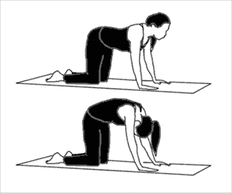 The Cat Stretch Start off on all fours, hands below your shoulders, knees below your hips. Make sure you're evenly balanced, keep your arms straight and strong and draw your belly button in towards you spine so your tummy doesn't 'sag' down to the floor. Gently arch your back, pushing your rib cage up to the ceiling, tucking your chin to your chest and your bottom underneath you (think of a dog tucking its tail between its legs!). Hold for a count of three, then gently lower back down to the starting position. Don't be tempted to arch the other way, sagging in the middle and sticking your bottom and head out, as this can over-arch the lower back and jam all the joints together - keep your back flat with your tummy muscles gently supporting your spine. Repeat this whole sequence 10 times or so, and do it every morning when you're getting up and last thing before bed. It only takes a couple of minutes and will really help to keep the spine healthy - a bit like cleaning your teeth twice a day keeps your teeth healthy! Sore knees? You can easily do this kneeling on your bed or on a couple of cushions. If it's still too much for your knees then you can do a 'half cat' - stand facing a wall, place your hands on the wall at shoulder height with your knees slightly bent and gently arch your back. Repeat 10 times, morning and evening. Obviously, if you find this stretch uncomfortable, painful or difficult to do, please be sensible and don't do it! Email me, or give me a call and we can work out what the problem is.
0 Comments
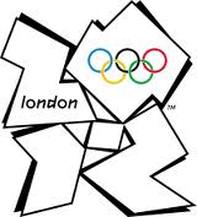 Things are hotting up at the London 2012 Olympics. Only a few more days until the Opening Ceremony... This week, the doors of the Athletes Village will open. Athletes and their support teams from 204 countries will start arriving. And, for the first time, chiropractors will be there! Within the Athletes Village is the state of the art Polyclinic. Open 24 hours a day this multidisciplinary clinic is kitted out with some of the most sophisticated equipment in the country and staffed by highly skilled specialists - including, for the first time ever, chiropractors. It is expected that a high proportion of the anticipated 200 competitors visiting the polyclinic each day will be suffering from musculoskeletal injuries - sprains, strains, muscle injuries and joint pains - exactly the sort of problems that we chiropractors excel in treating. So, it is expected that the team of chiropractors are going to be kept busy, providing care from 7am - 11pm every day, with 24 hour emergency 'on-call' cover as well! 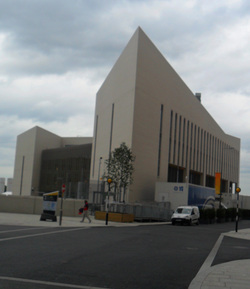 The state of the art Polyclinic in the Olympic Village The team of chiropractors will be working alongside other musculoskeletal healthcare specialists - orthopaedic surgeons, neurologists, sports injury physicians - as well as other core services like dentistry, optometry, and physiotherapy. Together, this team of medical specialists will help to ensure that athletes are in their peak condition for this most important time in their sporting careers.  Richard Brown meets Lord Coe Richard Brown, chiropractor and President of the British Chiropractic Association is one of the chiropractors who has taken time out of his busy practice and professional schedule to be treating the athletes. He had the opportunity to meet Lord Coe, Chairman of LOCOG, who voiced his support at the presence of chiropractors at the Olympics, and who said that his own career would have been far shorter, had it not been chiropractors. Hopefully, Richard and the other chiropractors in the Polyclinic will be able to keep the competitors in tip top condition; here's hoping that they enable Jessica Ennis and a few of her fellow competitors to bring home some shiny medals...!  Taller than average? Wonder if tall people really suffer more with their backs? A recent study, published in the journal Spine* shows that tall people are at far greater risk of being hospitalised due to low back problems affecting the intervertebral discs. *Wahlstrom et al. Risk factors for hospitalisation due to lumbar disc disease. Spine 2012 July 1;37(15):1334-1339 The study compared the incidence of back pain in over 260,000 construction workers over a period of 20 years. They found that taller people (190-199 cm; 6'3"-6'6") were 1.5 times more likely to be hospitalised due to lumbar disc disease than their shorter colleagues (170-179 cm; 5'7"-5'10"). These results are hardly surprising; tools and equipment are typically designed for those of 'average' height and build. Those at either end of the height spectrum find themselves having to use equipment that is not the ideal size for them which can cause extra strain on the spine. Ideally, people should take time to find equipment that is the right size for them. Longer handled tools, raised worktops, properly adjusted seats and desks can help to prevent back pain. We chiropractors recognise that 'prevention is better than cure' and much of chiropractic care is about giving advice to help prevent back pain in the first place, as well as treating it. 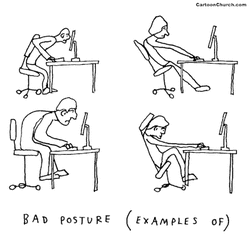 Many of my patients spend a long time each day sat at a desk and I see a direct correlation with the amount of neck and back pain they suffer. Prolonged sitting can be detrimental to the health of the spine, and poor posture can exacerbate this. Not only can poor posture lead to back and neck pain, but it can be related to many 'repetitive strain' type injuries of the wrists, elbows, hands and shoulders. Have a look at the picture below and see how it compares to your sitting position. Get someone to have a look at you when you're sitting and ask them to help you to adjust your seat accordingly. I've listed a few tips on how to sit properly, and hence minimise those aches and pains: Feet - your feet need to be flat on the floor to provide a firm stable base for your spine and pelvis. If your legs are dangling it can place stress on your back and the legs will pull you forwards into an incorrect position. If you need to raise your chair up to be at the right height for the desk, use a foot rest (a shoebox will do!) to support them.
Legs - your knees need to be bent and ideally a little below the level of your hips. Using a wedge cushion will help you to achieve this posture; not only is it more comfortable but it helps to maintain the 'lumbar lordosis' - the healthy curve in the base of the spine. Make sure that the edge of the seat doesn't dig into the back of your knees. Don't sit with your legs crossed - this hinders the circulation and will distort the position of the pelvis and low back. Bottom - Relax into the chair with your bottom right back in the seat, up against the seat back. This will allow the back of the chair to support your spine and improve your posture - ultimately reducing the risk of back pain. Don't perch on the edge of your seat, even for a few minutes, sit back in the chair and move the whole chair closer to the desk. Back - make sure your whole spine is supported; your low back against the backrest of the chair (many have a 'lumbar roll' which will help) and your upper back should be straight, with your shoulder blades gently resting on the back rest. This will help to minimise upper back pain, neck stiffness and achey shoulders. (If you're a 'little' person and find that you can't sit in the seat with your back and bottom touching the back rest, then you might need to place a cushion behind you.) Arms - your chair needs to be high enough so that your elbows are slightly bent and gently sloping down to your wrists (check that your feet still touch the floor if you've raised your seat up - if not, find that shoebox!). Your hands should relax gently onto the keyboard with a minimal bend at the wrist; don't rest your weight on your wrists. Incorrect hand and arm position can cause all sorts of problems! Make sure that your computer keyboard, mouse and screen are directly in front of you so you are not twisting the upper back or shoulders, and have them close enough to you so you don't have to stretch. Head and Neck - make sure that your screen is directly in front of you so you don't have to twist. If you are copying from text then place it in front of you (blutak it to the screen and proof read later!). The monitor needs to be roughly an arms' length away and should be at eye level. This will mean that you don't have to move your head about to see the screen. If the monitor is too high or low then you will have to look either up or down for prolonged periods - this can strain the upper back, neck and shoulder muscles and might cause pain and stiffness. If you find yourself peering at the screen, or leaning forwards to read the text, then maybe get your eyes checked, rather than risking neck pain and headaches. Keyboard and Mouse - make sure that these are close to your body and that you're not reaching out for them. Over-reaching for the mouse can cause prolonged strain on the whole arm and shoulder and seems to be one of the main causes for work-related upper limb pain. Use wireless ones if you can - it minimises the clutter on the desk and makes the mouse easier to move. Desk - in order for your arms and wrists to be in the correct position on the keyboard and mouse, your desk should be about level with your tummy button. You might need to raise the height of your chair to achieve this, but don't leave your legs dangling... find your shoebox/foot rest! Wriggle! - it is important to move about and change position regularly to relieve the pressure and strain on the body. Don't sit for more than 30-40 minutes; get up and walk around for a couple of minutes before sitting back down again (make sure you adopt the correct posture!). I suggest that patients stand up to answer the phone - there are whole offices in Anglesey with people bobbing up and down every five minutes (they're much less stiff and achey!). Remember 'face to face' time - go to see people down the corridor rather than using the internal email - make movement your friend (time away from the tedium of your desk has to be a good thing...!). Phone - use a headset if you are on the phone for any length of time, particularly if you have to be writing or typing at the same time. Holding the phone under your chin will cause your neck to 'crick' and shoulder muscles to tighten up quickly - more neck and upper back pain! Laptop Computers - the 'portability' of laptops makes them tempting to use in awkward positions. However, using them on your lap, particularly for more than a few minutes, can cause all sorts of problems - particularly with the neck and upper back. Make sure that you place your laptop on a desk or table, and adapt your sitting position accordingly to mimic a 'proper desk'. Place your laptop on a stand (a wedge of paper will do) to ensure the screen is at the right height, then adjust your seating position to match. As the keyboard is generally more compact on a laptop, it is worth using a wireless keyboard and mouse in order to prevent unnecessary hand and wrist strain. If you are using your laptop as a more permanent 'desktop' then plugging it in to a proper monitor and keyboard on a proper desk will help you to prevent the risk of back and neck pain. It might seem a pain to have to check your chair and desk - but, believe me, it is definitely more of a pain when your back and neck seize up due to an incorrect position! Spend a bit of time to get it right the once, and make sure you check it (and yourself!) on a daily basis... 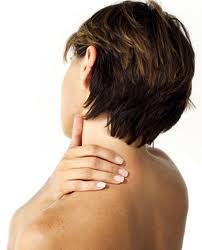 A debate has been published today in the British Medical Journal (8 June 2012), questioning the safety of neck manipulation. The story has been picked up by a number of national newspapers, and has been discussed on live radio and television programmes. Regrettably, many of these focus on the negative, so often the case with sensationalist journalism. I hope that I will be able to provide a more realistic, accurate and balanced view. Neck manipulation has been shown to be safe and effective and benefits thousands of people suffering from neck pain and headaches. In fact, the risk of a stroke after treatment is the same whether you see a GP and get a prescription, or see a chiropractor and get your neck adjusted. (http://www.ncbi.nlm.nih.gov/pubmed/18204390) Manipulation of the neck is at least as effective as other medical treatments and is safer than many of the drugs used to treat similar conditions. (http://www.ncbi.nlm.nih.gov/pubmed/17258728) The term chiropractic is often mis-used for treatment carried out by non-chiropractors. This leads to over-reporting of incidents blamed on chiropractors, including in the BMJ. In one report of 24 cases attributed to chiropractors, not one was shown to be a chiropractor. (http://chiromt.com/content/14/1/16#B21) Chiropractors are highly trained in spinal care and manipulation. In one UK study undertaken in 2007, of 50,000 neck treatments reviewed, not one single adverse event was reported. (http://www.ncbi.nlm.nih.gov/pubmed/17906581) The cherry-picking of poor quality research needlessly raises alarm in patients and does little to help people suffering from neck pain and headaches to choose the most appropriate treatment. I hope that this has allayed any fears or worries about the safety and efficacy of spinal manipulation when carried out by a trained, professional pair of hands. However, should you have any further concerns or queries - please, just ask! Having spent much of the bank holiday weekend traipsing around furniture stores, I know that buying a bed can be a costly and time consuming exercise! However, since a poor night's rest can cost you precious sleep and precipitate back pain, it's important to get it right.
So, what's the best mattress? The best mattress is a supportive one - this will differ for each person, depending on their size and shape. What's right for a 10 stone lady might not be right for her 16 stone husband. And, how do I find the right one?
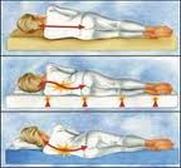 Ideally, your spine should be straight when you are lying, either on your side or your back. If your mattress sags or bows so will your spine, and this may cause aches and pains. Your neck is a continuation of your spine - and you should aim to keep this straight too when sleeping, so choose a supportive pillow that isn't too high or low (more on pillows at a later date...!)
There are several types of mattress, and again, it comes down to personal preference...
 Living near an RAF base I get to see a lot of fast-jet pilots with stiff, sore necks and achey backs, the consequence of low-level sorties, 'dog-fighting', and pulling 'g'. Sadly, whilst I see a few 'mavericks', none of my patients quite resemble Tom Cruise (think long-johns, thermals, Snowdonia and rain not board-shorts, sunnies, Miramar and sun!). As patients go, the aircrew guys are perhaps some of the worst - late cancellations when a debrief over-runs, or postponing an appointment when the flying programme changes at the last minute. However, after watching this awesome film, all is forgiven! You can't help but feel enormously proud and patriotic. Thanks guys. Fly safe :) And, for those of you left wanting more, here's another one. Just to keep you smiling.
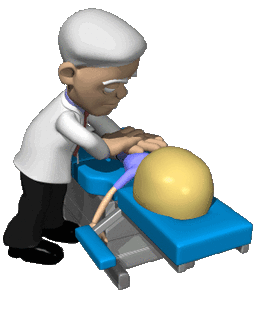 I'm always being asked 'what is the difference between a chiropractor and an osteopath?' My standard response is 'there are more similarities than differences; the training and teaching is very similar, the problems that we treat are the same, but the actual treatment methods and techniques may differ. It's a different way to skin a cat!' Having said which, there are huge variations within each profession and the technique used often depends on the individual practitioner (out of the myriad that they are taught!). There are some chiropractors who work in a very osteopathic way, and some osteopaths who work in a very chiropractic way! However, I've had a look at both professions and hopefully will provide a more thorough explanation... What do we study...? Both chiropractors and osteopaths undergo a 4 or 5 yr degree course at University and study all the basic biomedical sciences (anatomy, physiology, biochemistry, pathology, biomechanics, nutrition, pharmacology etc), together with the hands-on clinical stuff (physical examination, orthopaedics, neurology) and the various different treatment techniques (manipulation, mobilisation, soft tissue work, rehabilitation etc.) Students have to complete 2-3 years in the teaching clinic (real patients with real problems under supervision from clinicians) and complete a clinical research dissertation prior to graduating. On graduating, many of the associations require completion of a year-long Pre-Registration Training Scheme before they can be fully registered. There are several different Universities and Colleges in the UK that offer chiropractic or osteopathy, as well as those elsewhere in the world. All courses and colleges should be accredited with the appropriate educational and regulatory body. How are we regulated...? Both professions are regulated and protected in the UK by the General Chiropractic Council (GCC) or General Osteopathic Council (GOsC) respectively, who set and maintain the Code of Practice and Standards of Proficiency. Both regulatory bodies require all practitioners to register with them, and it is illegal to call yourself an osteopath or chiropractor, or to practise as one, if you are not on the appropriate Register. The GCC and GOsC require renewal of registration on an annual basis, and will check to see that the applicant has met the mandatory Continuing Professional Development (CPD) requirements, is in good health and good character, is in a 'fit state' to practise and has appropriate indemnity insurance. They can and do prosecute bad people, strike them off the register, or put restrictions of practise on them! In addition to this, individuals may join an association (eg the British Chiropractic Association, British Osteopathic Association). Each different association has its own membership criteria, (some more stringent than others, so may be a useful indicator in the 'quality' of the practitioner). The associations provide a number of different services and support for the practitioner, for instance indemnity insurance, business and clinical advice and legal support. The College of Chiropractors is another body; subdivided into regional and educational faculties, its primary role is the provision of postgraduate education, courses and seminars. Attendance at these can be used not only to meet the annual CPD requirements, but also to gain further post-graduate qualifications. So, what do we actually do...? Both chiropractors and osteopaths specialise in the diagnosis, treatment and management of conditions that affect the neuromusculoskeletal system and the affect that these may have on the overall health and wellbeing of the whole body. Both chiropractors and osteopaths use 'hands on' techniques (including manipulation, adjustment, mobilisation, soft tissue work, fascial release techniques, myofascial dry needling) to mobilise joints, ease muscle tension, reduce pain and restore neurological function. Most chiropractors and osteopaths will advise on rehabilitative exercises and stretches, posture and ergonomics, diet, nutrition and general exercise and lifestyle in order to promote recovery, prevent recurrence and improve overall health and wellbeing of the patient. Whilst traditionally thought of as just working on the spine (admittedly, we do tend to specialise in this!) both chiropractors and osteopaths treat the whole body. Hence, as well as treating problems affecting the neck, and low back pain we are proficient at treating problems affecting all the joints (including hip and knee pain, shoulder and elbow injuries, sports injuries, repetitive strain and over-use problems). Does it work and is it safe...? By taking a thorough medical and case history, and performing an extensive physical assessment, chiropractors and osteopaths are trained to pick up problems or complications that might prevent, or interfere with treatment. If this is the case, they are able to refer you on to the appropriate specialist, usually via your GP. The most appropriate type of treatment will be used for each individual patient, and techniques can be modified and adapted as necessary, so are safe and effective for people of all ages, shapes and sizes. The efficacy of chiropractic or osteopathy is supported in a number of peer-reviewed research studies, (particularly when assessing manipulation in the management of chronic or acute, low back or neck pain), but as in all areas of medicine we need more research! And, finally, which one's best...?! Both chiropractic and osteopathy are safe and effective in the management of problems with the muscles, joints and nerves. Both require a long period of initial and continued training, both are stringently regulated. As in any profession, regrettably there are unscrupulous individuals, and some practitioners may be better or worse than others. When advising whom to see, I always recommend that people should ensure that the practitioner is registered with their regulatory body, and ideally go with a 'word of mouth' recommendation from someone who has been a patient there before. At the end of the day, the appropriate qualified professional, whether chiropractor or osteopath, should be able to provide safe, professional, responsible and ethical care of patients. |
Ceri AnnEich Ceiropractydd yng Nghlinig Ceiropracteg Llangefnii Blogumulus by Roy Tanck and Amanda Fazani
Archives
June 2020
|
Llangefni Chiropractic Clinic, 6 GlanHwfa Rd, Llangefni LL777EN, Anglesey, North Wales, UK privacy policy Llangefni Chiropractic Clinic 2020
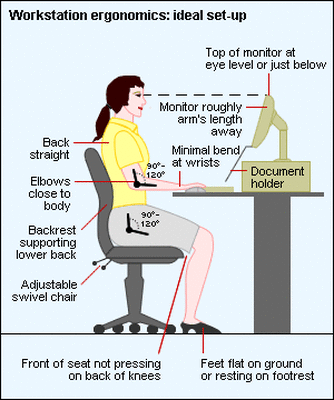
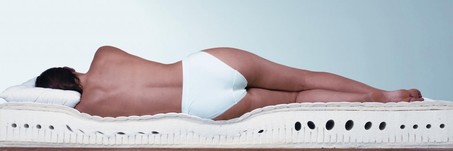
 RSS Feed
RSS Feed



